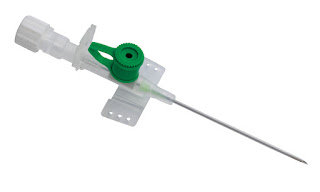Some Insights into Intravenous Cannula (IV Cannula)
Intravenous Cannula is a cannula set inside a vein to give venous get to. Most patients need no less than one fringe intravenous cannula (PIVC) amid their healing center remain for IV liquids and pharmaceuticals, blood items or nourishment.
Is the Cannula Working?
At the point when an Intravenous Cannula is embedded, a flashback of blood in the chamber affirms it’s in the vein. Subsequently, the cannula area is evaluated by the stream of IV liquids (either by mixture pump or gravity) and additionally IV flushes (manual infusion).
Flushing the Intravenous Cannula with 0.9% saline previously, then after the fact IV pharmaceuticals lessen admixture of solutions and reductions the danger of blockage.
Intravenous Cannulas frequently end up plainly blocked, crimped or ousted, so ensure the cannula is as yet working each move.
You can evaluate Intravenous Cannula work with two essential inquiries:
Does the IV flush efficiently?
Does the IV liquid stream effectively?
Resistance or inability to flush or stream shows the Intravenous Cannula may be crimped or blocked or could have relocated out of the vessel.
Does the Patient tolerate the Cannula?
Give clarifications and training about the treatment, and check the patient/family gets it. Guarantee the patient knows why the Intravenous Cannula is in, and urge them to talk up if there are any issues, for example, torment, spilling, swelling, and so forth.
The Intravenous Cannula ought not to be excruciating. Torment is an early side effect of phlebitis (aggravation of the vein) and implies that the Intravenous Cannula is not functioning admirably and ought to be expelled. On the off chance that the patient still needs an IV, and their veins are delicate, consider the addition of the other gadget, for example, incidentally embedded focal catheter.
An Irish review found that patients were seven times more prone to have an Intravenous Cannula left in, unused when they didn’t know why it was there.
Including the patient and family enables them to voice their worries, and prompts medical caretakers to address issues and expel unused Intravenous Cannulas.
Is the Cannula Appropriately Dressed and Secured?
Straightforward polyurethane or sterile cloth and tape dressings are both suggested. Polyurethane dressings are helpful, as they permit permeability of the IV site and can stay set up to 7 days. Bandage and tape dressings function admirably for diaphoretic patients. However, they ought to be changed each two days.
Dressings must be spotless, dry and in place to counteract microbial tainting of the site. Change the Intravenous Cannula dressing if it ends up noticeably moist, free, or unmistakably filthy, and secure the Intravenous Cannula and implantation tubing with tape, net or swathe, leaving the site obvious.
Clinic reviews indicate 25% of Intravenous Cannula dressings are not perfect, dry and in place.
This builds the danger of disease and cannula dislodgement. An inadequately secured Intravenous Cannula supports contamination, as cannula development in the vein can permit movement of life forms along the cannula and into the circulation system.
Regular IV Cannula Complications:
Phlebitis (aggravation of the vein) is described by at least one of the accompanying: torment, redness, swelling, warmth, a red streak along the vein, the hardness of the IV site, and additionally purulence. Invasion is the spillage of a non-vesicant arrangement into the encompassing tissues, bringing on torment and swelling.
Extravasation is the relocation into the tissues of a vesicant pharmaceutical or liquid, for example, chemotherapy. This can be tough and cause significant tissue injury.
Thrombosis or thrombophlebitis is the development of coagulation in the vessel, frequently created by the cannula moving around in the vein and irritating the vein divider.
Nerve harm can happen amid Intravenous Cannula addition. If the patient gripes of a sharp torment shooting up the arm, or continuous deadness or shivering of the furthest point, the cannula ought to be evacuated instantly.
Fractional or finish dislodgement of the Intravenous Cannula demonstrates it is no longer in the vessel and must be evacuated.
ivcannula cannula Lars Safetycannula medicaldisposableitems Larsmedicare canula visit for more :- https://www.larsmedicare.com/
ivcannula cannula Lars Safetycannula medicaldisposableitems Larsmedicare canula visit for more :- https://www.larsmedicare.com/




Comments
Post a Comment